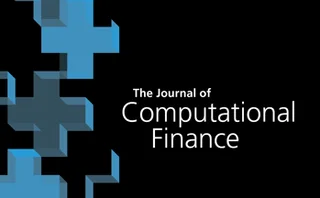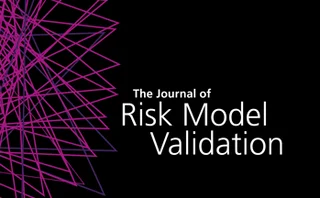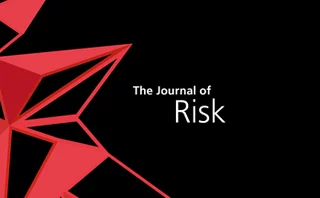Value-at-risk (VAR)
MVA transfer pricing
Wujiang Lou extends liability-side pricing theory to initial margin
SEC prepares Dodd-Frank buy-side stress tests
Asset manager stress tests aim to measure fund liquidity and contagion risks
Risk management for whales
Rama Cont and Lakshithe Wagalath introduce a liquidation-adjusted VAR
Extended saddlepoint methods for credit risk measurement
This paper reviews and extends the saddlepoint methods currently available to measure credit risk.
Value-at-risk estimation with the Carr–Geman–Madan–Yor process: an empirical study on foreign exchange rates
This paper investigates the performance of the CGMY distribution in estimating the risk of FX rates.
Testing value-at-risk models in emerging markets during crises: a case study on South Eastern European countries
This paper examines the applicability of a wide range of VaR models in emerging markets, focusing on South Eastern European countries.
Two sides of the same coin: risk measures in the energy markets
This paper investigates whether there are existing common model features that yield consistently superior results under both VaR and ES risk metrics in the energy commodities markets.
Evaluating the performance of the skewed distributions to forecast value-at-risk in the global financial crisis
This paper models the tail behavior of daily returns and forecasting VaR in order to evaluate the performance of several skewed and symmetric distributions.
Extreme value theory for heavy tails in electricity prices
This paper looks at hourly spot prices at the German electricity market and applies extreme value theory (EVT) to investigate the tails of the price change distribution.
Expected shortfall and VAR: cracking the marginal allocations
A new method to estimate marginal VAR and marginal ES is presented
The FRTB data management challenge
Sponsored forum: Asset Control
Options for tackling model risk limited, conference hears
Greater use of models means risk "has significantly increased", says HSBC's Bhaskar
Value-at-risk time scaling: a Monte Carlo approach
This paper discusses a VaR time-scaling approach based on fitting a distribution function so as to apply a Monte Carlo simulation to determine long-term VaR.
Quant Ideas: How VAR can add value to energy market analysis
Alessandro Mauro shows how using value-at-risk can improve market risk analysis in the energy sector
Revised Basel III better reflects bank risk, research finds
Study says 2013 capital rules more in line with actual risk, but can be easily gamed
On optimal smoothing of density estimators obtained from orthogonal polynomial expansion methods
This paper discusses the application of orthogonal polynomials to the estimation of probability density functions.
Testing interest rate models for Solvency II applications
Alexey Botvinnik and Vladimir Ostrovski propose a validation method for interest rate models
Extreme value theory has hidden risks, research finds
Method for calculating capital based on sparse data can lead to additional model risk
Model uncertainty in risk capital measurement
The authors of this paper propose to quantify the effectiveness of a capital estimation procedure via the notions of residual estimation risk and estimated capital risk.
Cutting Edge introduction: No more shortfalls?
Academics develop expected shortfall backtest to compare standardised and internal models
Expected shortfall is jointly elicitable with value-at-risk: implications for backtesting
Fissler, Ziegel and Gneiting investigate the role of elicitability in backtesting problems and show how comparative backtests can be implemented for expected shortfall
Diversification benefit of operational risk
Torresetti and Le Pera explore the relevance of the diversification benefit from a theoretical and practical viewpoint
Downside risk measure performance in the presence of breaks in volatility
This paper proposes a loss function-based framework for the comparative measurement of the sensitivity of quantile downside risk measures to breaks in volatility or distribution.
An analytical value-at-risk approach for a credit portfolio with liquidity horizon and portfolio rebalancing
The authors provide a two-period analytical value-at-risk approach for credit portfolios with a liquidity horizon and a constant level of risk.
















